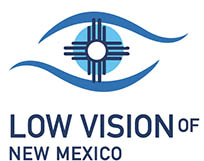
Image via (albinism01.weebly.com)
The International Association of Low Vision Specialists (IALVS) is the largest group of practicing low vision specialists in the USA with members in almost every state in the union. As a group, we treat hundreds of patients with Albinism, using special low vision glasses like bioptics for driving, telescopic and microscopic glasses for reading and a myriad of other devices that assist these patients with many of their activities of daily living.
Albinism patients are photophobic sensitive to light. Their eyes move back and forth. In my practice, the majority of patients I see with Albinism are teenagers who want to pass the state drivers test but are unable to do so because of their low vision. In Mississippi, you need to see at 20/50 for out of one eye in order to get your drivers license. Our goal is to get that done in order that they should be able to drive and see road signs. Most of the patients I see fall in the range of 20/70 – 20/200, best corrected (using their glasses).
In Mississippi an applicant for a drivers license must be tested at the local DMV office, and if their vision is not good enough to qualify for a drivers license, then they are referred to a low vision specialist for further testing to determine if using these special telescopic glasses will enable them to become licensed to drive. It is rare that I am not able to improve the patient’s vision enough that they will not be licensed to drive, so the encounter with these patients is almost always a very favorable one because these teenagers are so very motivated to obtain a drivers license, and they adapt very quickly to using these special glasses for driving as well as using them for other things like seeing the board at school, reading overhead menus in McDonalds and seeing the faces of their classmates from a distance. We will try fitting them with 2.2 or 3.0 bioptics.
I had such a warming experience about 3 months ago while examining a 17 year old Albinism patient. He was so very apprehensive that he was not going to be able to qualify to drive due to his level of vision, so when he read the 20/50 line with ease, and I then told him that he just qualified for bioptic driving glasses, both he and his mom both broke out in tears and he said to me..”Thank you doctor, you just changed my life!” Needless to say, the whole encounter touched my heart too and I was honored to have been able to help this fine young man towards achieving his goals in life.
It should be noted that in my state of Mississippi, qualifying to drive with bioptics carries with it some additional training in the use of the glasses that is prescribed by his low vision doctor. In addition, bioptic drivers must take a driving course and be certified to drive by a certified bioptic driving instructor. That requirement is never a hurdle with these patients because of their willingness to do whatever is needed in order to drive and thereby live a more normal life, just like their classmates.
I love what I do in the low vision field and it is encounters like this one that really make it special for me. More and more eye doctors today are becoming more comfortable telling patients that “something can be done to help you” rather than “I am sorry, but there is nothing else that can be done for you.” Remember that while it may be true that nothing more can be done for the eye, it is almost never true that nothing more can be done for the patient!
